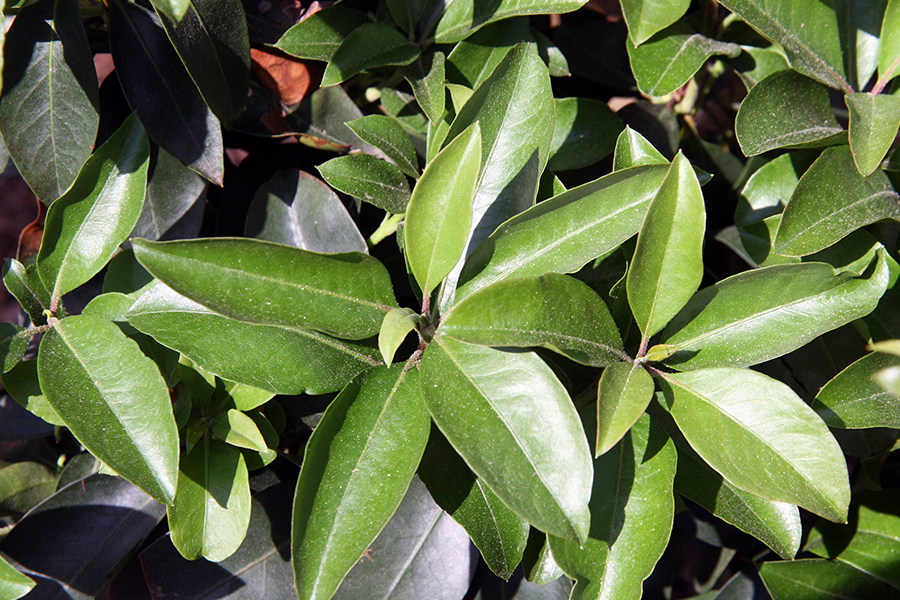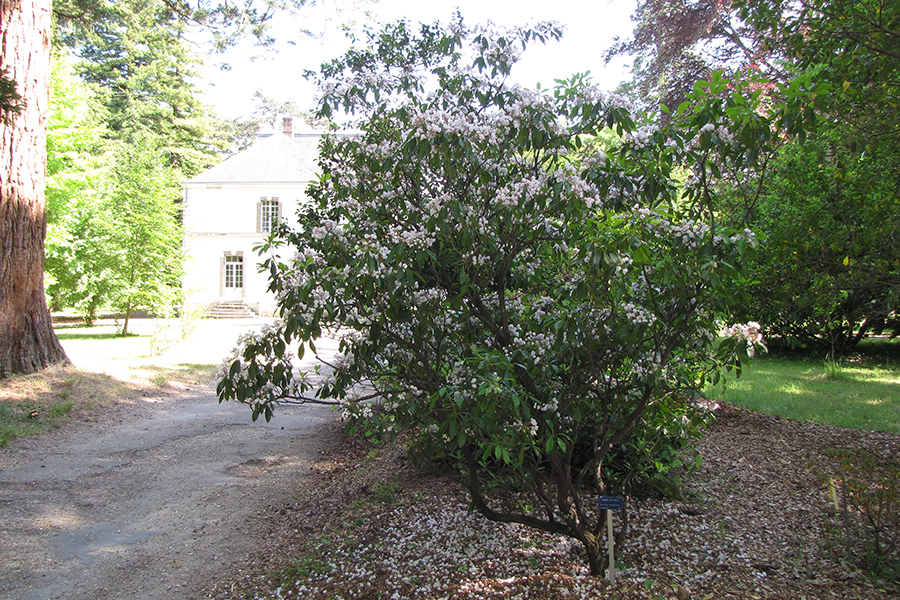Kalmia latifolia
Mountain laurel is an evergreen shrub with shiny, waxy leaves and large blooms of small pink or white flowers. Despite all parts of the plant being toxic, mountain laurels are an important source of nectar for many pollinators.
Location
Mountain laurels can be found along the interior side of the East-West trail as runs along Lovell Street.


History at Hadwen
Mountain laurel was recorded as one of the species originally planted by Hadwen at least as early as 1882. In surveys conducted at the Hadwen Arboretum in 1971 and 1978, mountain laurel persists.
Keep Learning
Detailed Species Information
Mountain laurel, also known as calico-bush or spoonwood, is an evergreen flowering shrub in the family Ericaceae, native to the eastern United States. Typically more of a shrub than a tree, the mountain laurel reaches 9–29 feet (3–9 meters) in height. The bark is dark brown or reddish-brown and characterized by vertical peeling ridges. The deep green leaves are 5 inches (12 centimeters) in length, narrow, almond-shaped, shiny, and slightly waxy. In spring, the light pink or white hexagonal flowers emerge with bright pink details inside. It should be noted that all parts of this plant are poisonous.
Mountain laurel grows naturally on rocky slopes, uplands, and forests on mountainsides, preferring acidic soils. It is common to find mountain laurel growing in large thickets in the understories of forests. The flowers of the mountain laurel support many pollinators such as butterflies and hummingbirds. The wood of the mountain laurel is not commercially valuable due to its small size but can be used to make wreaths and baskets. The leaves were also used as a painkiller by the Cherokee, indigenous people of the southeastern United States. Because of its beautiful and distinctive flowers and glossy, evergreen leaves, the mountain laurel is sometimes planted as an ornamental shrub, and many cultivars have been developed.
